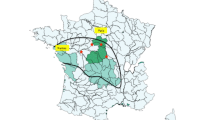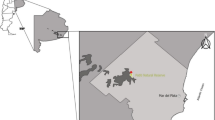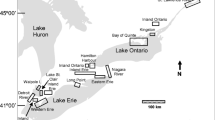Abstract
Liver samples of 12 species of birds of different trophic levels, collected during the period 1998–2000 from coastal areas of the Campania region, Southern Italy, were analyzed for organochlorine pesticides (OCs), such as dichlorodiphenyltrichloroethane (DDT) and its metabolites, hexachlorobenzene (HCB), γ-hexachlorocycloexane (γ-HCH), aldrin, dieldrin, endrin, and the seven PCB “target” congeners, IUPAC Nos. 28, 52, 101, 118, 138, 153 and 180. p,p′-DDE was present in all the samples analyzed, at concentrations ranging from 4 to 4504 ng/g wet wt, which were much higher than those found for HCB, dieldrin, and p,p′-DDD. The concentrations of the others OCs were below the detection limit in all the samples. PCBs were found in all the bird species at levels ranging between 6 and 8431 ng/g wet wt. The hepta-, hexa-, and penta-chlorinated congeners 180, 153, 138, and 118 were predominant since, in almost all the species, they contributed to more than 98% of the total seven determined PCBs. No significant differences in mean concentrations of organochlorine pesticides are detected between single species or between species grouped according to their feeding habits (p > 0.05). However, p,p′-DDE levels were higher in carnivorous species than in omnivorous and insectivorous ones (carnivorous > omnivorous > insectivorous). Concentrations of total PCBs were significantly higher in omnivorous birds than in carnivorous (p < 0.01) and insectivorous ones (p < 0.001), whereas carnivorous birds exhibited significantly higher total PCB levels than insectivorous ones (p < 0.01). Marked differences in total PCB concentrations were found also between single species (from p < 0.05 to p < 0.001). Levels of OCs and PCBs were generally below the thresholds known to affect reproduction, however, mean hepatic concentrations of total PCBs in the yellow-legged herring gull (Larus cachinnans), black-headed gull (Larus ridibundus), and kestrel (Falcus tinnunculus) were far higher than those estimated to elicit immunosuppressive effects and possibly increase susceptibility to parasitoses.
Similar content being viewed by others
Author information
Authors and Affiliations
Rights and permissions
About this article
Cite this article
Naso, ., Perrone, ., Ferrante, . et al. Persistent Organochlorine Pollutants in Liver of Birds of Different Trophic Levels from Coastal Areas of Campania, Italy. Arch Environ Contam Toxicol 45, 407–414 (2003). https://doi.org/10.1007/s00244-003-2201-z
Issue Date:
DOI: https://doi.org/10.1007/s00244-003-2201-z




